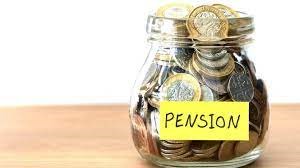Your Pension and Divorce
Pensions are one of the major assets within the financial settlement of a divorce or dissolution of a civil partnership. This includes state pensions, pensions paid by employees and their employers, and personal pensions. During divorce, a judge will consider pensions in the financial settlement to ensure a fair agreement is reached.
There is no set precedent for how assets are divided. The usual starting point is 50:50. This is amended to include other factors e.g. income of each spouse, potential future earnings, children’s needs, financial needs, health issues and marriage length.
There are three ways a pension can be divided, by attachment order, pension sharing and offsetting.
Attachment Orders
Attachment Orders were introduced in the Matrimonial Causes Act 1973. A Pension Attachment Order (or earmarking) allows the party without the pension to receive income and/or lump sum payments in. The downsides are if the party with the pension dies first, they would receive no payment from the pension. The other disadvantage is that the person with the pension continues to pay into the pension for the benefit of their former partner.
Pension Sharing
This was introduced in the Welfare reform and Pensions Act 1999. Pension Sharing minimises the disadvantages of Attachment Orders for some couples. With a pension sharing order the claim against the pension is not attached to the existing policy. The pension share, whatever the percentage may be, is deducted from the scheme and placed into an alternative scheme. For instance, if party 1 is ordered to have a 50% share of party 2’s pension then that 50% is separated from party 2’s scheme and placed in an alternative scheme of their choosing. The advantage of this is firstly party 1 is not dependent on party 2 living to retirement age, and secondly that party 2 is not continuing to pay into a fund of which party 1 will ultimately receive 50%. A pension sharing order allows for there to be a clean break between both parties.
An actuary will create a pension sharing report showing the cash equivalent value of the pension. This report will incorporate other factors into the calculations. Other factors include your age, and if a proportion of the pension fund is to be ignored i.e. an amount accrued prior to the marriage and/or after the separation. The pension sharing order is expressed as a percentage share of the cash equivalent value of the fund.
An independent financial advisor (IFA) will also need to be instructed to give advice on where the share should be placed. Sometimes the current pension provider will allow an internal transfer, if not, the share will be transferred to an alternative provider. An IFA will then provide advice on the best scheme to transfer the fund into.
Offsetting
In offsetting other assets are given instead of a pension share. An example of this would be when one party keeps the pension and the other has additional equity in the marital home. An actuary will to assess the capital required to buy out a pension share.
Pensions are a minefield at the best of times, particularly in family law. Whether to offset a pension or obtain a pension sharing order? Whether to drawdown the fund or a percentage of it? You must take into account the whole financial situation when choosing. This must include all available income and capital. Each couples situation will be individual to them and should be considered carefully. Your solicitor will give advice as to the best possible outcome for you and your circumstances.
If you need any family law advice, not just about your pension, contact Clare Cherry, our specialist Solicitor today.

